- Home
- Graham Hancock
Fingerprints of the Gods Page 5
Fingerprints of the Gods Read online
Page 5
‘discovered’ in AD 1818. But could it have been mapped thousands of
years earlier than that by the cartographers of an as yet unidentified
high civilization of prehistory?
Is it possible that a human civilization, sufficiently advanced to have
mapped Antarctica, could have developed by 13,000 BC and later
disappeared? And, if so, how much later?
The combined effect of the Piri Reis, Oronteus Finaeus, Mercator and
Buache Maps is the strong, though disturbing, impression that Antarctica
may have been continuously surveyed over a period of several thousands
of years as the ice-cap gradually spread outwards from the interior,
increasing its grip with every passing millennium but not engulfing all the
coasts of the southern continent until around 4000 BC. The original
sources for the Piri Reis and Mercator Maps must therefore have been
prepared towards the end of this period, when only the coasts of
30
Graham Hancock – FINGERPRINTS OF THE GODS
Antarctica were free of ice; the source for the Oronteus Finaeus Map, on
the other hand, seems to have been considerably earlier, when the icecap was present only in the deep interior of the continent; and the source
for the Buache Map appears to originate in even earlier period (around
13,000 BC), when there may have been no ice in Antarctica at all.
South America
Were other parts of the world surveyed and accurately charted at widely
separated intervals during this same epoch; roughly from 13,000 BC to
4000 BC? The answer may lie once again in the Piri Reis Map, which
contains more mysteries than just Antarctica:
• Drawn in 1513, the map demonstrates an uncanny knowledge of South
America—and not only of its eastern coast but of the Andes mountains
on the western side of the continent, which were of course unknown at
that time. The map correctly shows the Amazon River rising in these
unexplored mountains and thence flowing eastwards.15
• Itself compiled from more than twenty different source documents of
varying antiquity,16 the Piri Reis Map depicts the Amazon not once but
twice (most probably as a result of the unintentional overlapping of
two of the source documents used by the Turkish admiral17). In the first
of these the Amazon’s course is shown down to its Para River mouth,
but the important island of Marajo does not appear. According to
Hapgood, this suggests that the relevant source map must have dated
from a time, perhaps as much as 15,000 years ago, when the Para
River was the main or only mouth of the Amazon and when Marajo
Island was part of the mainland on the northern side of the river.18 The
second depiction of the Amazon, on the other hand, does show Marajo
(and in fantastically accurate detail) despite the fact that this island was
not discovered until 1543.19 Again, the possibility is raised of an
unknown civilization which undertook continuous surveying and
mapping operations of the changing face of the earth over a period of
many thousands of years, with Piri Reis making use of earlier and later
source maps left behind by this civilization.
• Neither the Orinoco River nor its present delta is represented on the
Piri Reis Map. Instead, as Hapgood proved, ‘two estuaries extending far
inland (for a distance of about 100 miles) are shown close to the site of
the present river. The longitude on the grid would be correct for the
15 Maps, p. 68.
16 Ibid., p. 222.
17 Ibid., pp. 64-5.
18 Ibid., p. 64.
19 Ibid., p. 65.
31
Graham Hancock – FINGERPRINTS OF THE GODS
Orinoco, and the latitude is also quite accurate. Is it possible that these
estuaries have been filled in, and the delta extended this much, since
the source maps were made?’20
• Although they remained undiscovered until 1592, the Falkland Islands
appear on the 1513 map at their correct latitude.21
• The library of ancient sources incorporated in the Piri Reis Map may
also account for the fact that it convincingly portrays a large island in
the Atlantic Ocean to the east of the South American coast where no
such island now exists. Is it pure coincidence that this ‘imaginary’
island turns out to be located right over the sub-oceanic Mid-Atlantic
Ridge just north of the equator and 700 miles east of the coast of
Brazil, where the tiny Rocks of Sts. Peter and Paul now jut above the
waves?22 Or was the relevant source map drawn deep in the last Ice
Age, when sea levels were far lower than they are today and a large
island could indeed have been exposed at this spot?
Sea levels and ice ages
Other sixteenth-century maps also look as though they could have been
based on accurate world surveys conducted during the last Ice Age. One
was compiled by the Turk Hadji Ahmed in 1559, a cartographer, as
Hapgood puts it, who must have had access to some ‘most extraordinary’
source maps.23
The strangest and most immediately striking feature of Hadji Ahmed’s
compilation is that it shows quite plainly a strip of territory, almost 1000
miles wide, connecting Alaska and Siberia. Such a ‘land-bridge’, as
geologists refer to it, did once exist (where the Bering Strait is now) but
was submerged beneath the waves by rising sea levels at the end of the
last Ice Age.24
The rising sea levels were caused by the tumultuous melting of the icecap which was rapidly retreating everywhere in the northern hemisphere
by around 10,000 BC.25 It is therefore interesting that at least one ancient
map appears to show southern Sweden covered with remnant glaciers of
the kind that must indeed have been prevalent then in these latitudes.
The remnant glaciers are on Claudius Ptolemy’s famous Map of the North.
Originally compiled in the second century AD, this remarkable work from
the last great geographer of classical antiquity was lost for hundreds of
20 Ibid., p. 69.
21 Ibid., p. 72.
22 Ibid., p. 65.
23 Ibid., p. 99.
24 Ibid.
25 Ibid., p. 164.
32
Graham Hancock – FINGERPRINTS OF THE GODS
years and rediscovered in the fifteenth century.26
Ptolemy was custodian of the library at Alexandria, which contained the
greatest manuscript collection of ancient times,27 and it was there that he
consulted the archaic source documents that enabled him to compile his
own map.28 Acceptance of the possibility that the original version of at
least one of the charts he referred to could have been made around
10,000 BC helps us to explain why he shows glaciers, characteristic of
that exact epoch, together with ‘lakes ... suggesting the shapes of
present-day lakes, and streams very much suggesting glacial streams ...
flowing from the glaciers into the lakes.’29
It is probably unnecessary to add that no one on earth in Roman times,
when Ptolemy drew his map, had the slightest suspicion that ice ages
could once have existed in northern Europe. Nor did anyone in the
fifteenth century (when the map was rediscovered) posse
ss such
knowledge. Indeed, it is impossible to see how the remnant glaciers and
other features shown on Ptolemy’s map could have been surveyed,
imagined or invented by any known civilization prior to our own.
The implications of this are obvious. So, too, are the implications of
another map, the ‘Portolano’ of Iehudi Ibn Ben Zara, drawn in the year
1487.30 This chart of Europe and North Africa may have been based on a
source even earlier than Ptolemy’s, for it seems to show glaciers much
farther south than Sweden (roughly on the same latitude as England in
fact)31 and to depict the Mediterranean, Adriatic and Aegean Seas as they
might have looked before the melting of the European ice-cap.32 Sea level
would, of course, have been significantly lower than it is today. It is
therefore interesting, in the case for instance of the Aegean section of the
map, to note that a great many more islands are shown than currently
exist.33 At first sight this seems odd. However, if ten or twelve thousand
years have indeed elapsed since the era when Ibn Ben Zara’s source map
was made, the discrepancy can be simply explained: the missing islands
26 Ibid., p. 159.
27 See Luciano Canfora, The Vanished Library, Hutchinson Radius, London, 1989
28 Maps, p. 159.
29 Ibid., p. 164.
30 Ibid., p. 171
31 Ibid., pp. 171-2.
32 Ibid.
33 Ibid., pp. 176-7.
33
Graham Hancock – FINGERPRINTS OF THE GODS
must have been submerged by rising sea levels at the end of the last Ice
Age.
Once again we seem to be looking at the fingerprints of a vanished
civilization—one capable of drawing impressively accurate maps of widely
separated parts of the earth.
What kind of technology, and what state of science and culture, would
have been required to do a job like that?
34
Graham Hancock – FINGERPRINTS OF THE GODS
Chapter 3
Fingerprints of a Lost Science
We saw that the Mercator World Map of 1569 included an accurate
portrayal of the coasts of Antarctica as they would have looked thousands
of years ago when they were free of ice. Interestingly enough, this same
map is considerably less accurate in its portrayal of another region, the
west coast of South America, than an earlier (1538) map also drawn by
Mercator.1
The reason for this appears to be that the sixteenth-century geographer
based the earlier map on the ancient sources which we know he had at
his disposal, whereas for the later map he relied upon the observations
and measurements of the first Spanish explorers of western South
America. Since those explorers had supposedly brought the latest
information back to Europe, Mercator can hardly be blamed for following
them. In so doing the accuracy of his work declined: instruments capable
of finding longitude did not exist in 1569, but appear to have been used
to prepare the ancient source documents Mercator consulted to produce
his 1538 map.2
The mysteries of longitude
Let us consider the problem of longitude, defined as the distance in
degrees east or west of the prime meridian. The current internationally
accepted prime meridian is an imaginary curve drawn from the North Pole
to the South Pole passing through the Royal Observatory at Greenwich,
London. Greenwich therefore stands at o° longitude while New York, for
example, stands at around 74° west, and Canberra, Australia, at roughly
150° east.
1 Maps, p. 107.
2 Ibid.
35
Graham Hancock – FINGERPRINTS OF THE GODS
It would be possible to write an elaborate explanation of longitude and
of what needs to be done to fix it precisely for any given point on the
earth’s surface. What we are concerned with here, however, is not so
much technical detail as the accepted historical facts about humanity’s
growing knowledge of the mysteries of longitude. Among these facts, this
is the most important: until a breakthrough invention in the eighteenth
century, cartographers and navigators were unable to fix longitude with
any kind of precision. They could only make guesses which were usually
inaccurate by many hundreds of miles, because the technology had not
yet been developed to allow them to do the job properly.
Latitude north or south of the equator did not pose such a problem: it
could be worked out by means of angular measurements of the sun and
stars taken with relatively simple instruments. But to find longitude
equipment of an altogether different and superior calibre was needed,
which could combine position measurements with time measurements.
Throughout the span of known history the invention of such equipment
had remained beyond the capacities of scientists, but by the beginning of
the eighteenth century, with rapidly increasing sea traffic, a mood of
impatience and urgency had set in. In the words of an authority on the
period, ‘The search for longitude overshadowed the life of every man
afloat, and the safety of every ship and cargo. Accurate measurement
seemed an impossible dream and “discovering the longitude” had become
a stock phrase in the press like “pigs might fly”.’3
3 Simon Bethon and Andrew Robinson, The Shape of the World: The Mapping and
Discovery of the Earth, Guild Publishing, London, 1991, p. 117.
36
Graham Hancock – FINGERPRINTS OF THE GODS
What was needed, above all else, was an instrument that would keep
the time (at the place of departure) with perfect accuracy during long sea
journeys despite the motion of the ship and despite the adverse
conditions of alternating heat and cold, wet and dry. ‘Such a Watch’, as
Isaac Newton told the members of the British government’s official Board
of Longitude in 1714, ‘hath not yet been made’.4
Indeed not. The timepieces of the seventeenth and early eighteenth
centuries were crude devices which typically lost or gained as much as a
quarter of an hour per day. By contrast, an effective marine chronometer
could afford to lose or gain that much only over several years.5
It was not until the 1720s that the talented English clockmaker John
Harrison began work on the first of a series of designs which resulted in
the manufacture of such a chronometer. His objective was to win the
prize of £20,000 offered by the Board of Longitude ‘for the inventor of
any means of determining a ship’s longitude within 30 nautical miles at
the end of a six weeks’ voyage’.6 A chronometer capable of fulfilling this
condition would have to keep time to within three seconds per day. It
took almost forty years, during which several prototypes were completed
and tested, before Harrison was able to meet these standards. Finally, in
1761, his elegant Chronometer No. 4 left Britain on board HMS Deptford
bound for Jamaica, accompanied by Harrison’s son William. Nine days
into the voyage, on the basis of longitude calculations made possible by
the chronometer, William advised the captain that they would s
ight the
Madeira Islands the following morning. The captain offered five to one
that he was wrong but agreed to hold the course. William won the bet.
Two months later, at Jamaica, the instrument was found to have lost just
five seconds.7
Harrison had surpassed the conditions set by the Board of Longitude.
Thanks to the British government’s bureaucratic dithering, however, he
was not awarded the £20,000 prize money until three years before his
death in 1776. Understandably, it was only when he had the funds in his
hands that he divulged the secrets of his design. As a result of this delay,
Captain James Cook did not have the benefit of a chronometer when he
made his first voyage of discovery in 1768.8 By the time of his third
voyage, however (1778-9), he was able to map the Pacific with impressive
accuracy, fixing not only the correct latitude but the correct longitude of
every island and coastline.9 Henceforward, ‘thanks to Cook’s care and
Harrison’s chronometer ... no navigator could have an excuse for failing
to find a Pacific island ... or for being wrecked on a coastline appearing
4 Ibid., p. 121.
5 Ibid., p. 120.
6 Encyclopaedia Britannica, 1991, 3:289.
7 Shape of the World, pp. 123-4.
8 Ibid., p. 125.
9 Ibid., p. 131.
37
Graham Hancock – FINGERPRINTS OF THE GODS
from nowhere.’10
Indeed, with their accurate longitudes, Cook’s Pacific maps must be
ranked among the very first examples of the precise cartography of our
modern era. They remind us, moreover, that the making of really good
maps requires at least three key ingredients: great journeys of discovery;
first-class mathematical and cartographic skills; sophisticated
chronometers.
It was not until Harrison’s chronometer became generally available in
the 1770s that the third of these preconditions was fulfilled. This brilliant
invention made it possible for cartographers to fix longitude precisely,
something that the Sumerians, the Ancient Egyptians, the Greeks and the
Romans, and indeed all other known civilizations before the eighteenth
century were supposedly unable to do. It is therefore surprising and
unsettling to come across vastly older maps which give latitudes and
longitudes with modern precision.
Precision instruments
These inexplicably precise latitudes and longitudes are found in the same

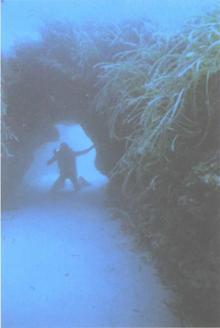 Underworld: The Mysterious Origins of Civilization
Underworld: The Mysterious Origins of Civilization The Master Game: Unmasking the Secret Rulers of the World
The Master Game: Unmasking the Secret Rulers of the World America Before
America Before Entangled
Entangled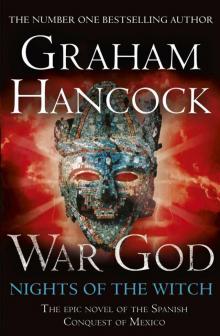 War God: Nights of the Witch
War God: Nights of the Witch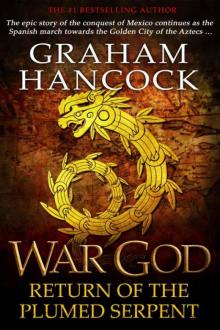 War God: Return of the Plumed Serpent
War God: Return of the Plumed Serpent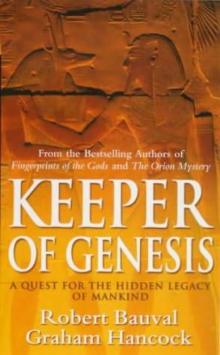 The Message of the Sphinx AKA Keeper of Genesis
The Message of the Sphinx AKA Keeper of Genesis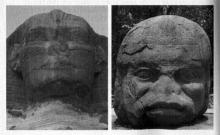 Fingerprints of the Gods
Fingerprints of the Gods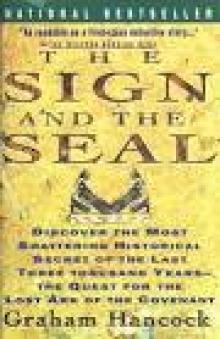 The Sign and the Seal
The Sign and the Seal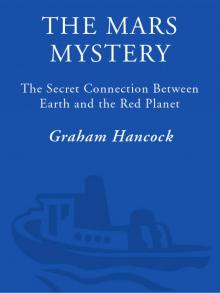 The Mars Mystery: The Secret Connection Between Earth and the Red Planet
The Mars Mystery: The Secret Connection Between Earth and the Red Planet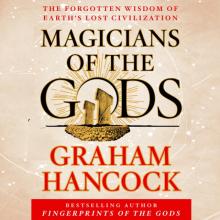 Magicians of the Gods: The Forgotten Wisdom of Earth's Lost Civilization
Magicians of the Gods: The Forgotten Wisdom of Earth's Lost Civilization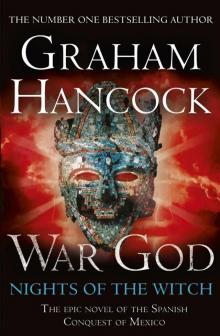 War God
War God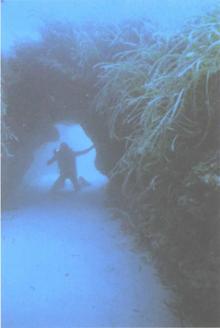 Underworld
Underworld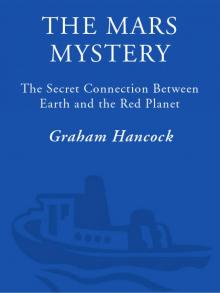 The Mars Mystery
The Mars Mystery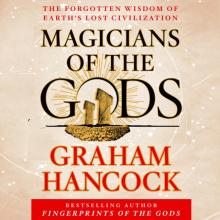 Magicians of the Gods
Magicians of the Gods The Master Game
The Master Game